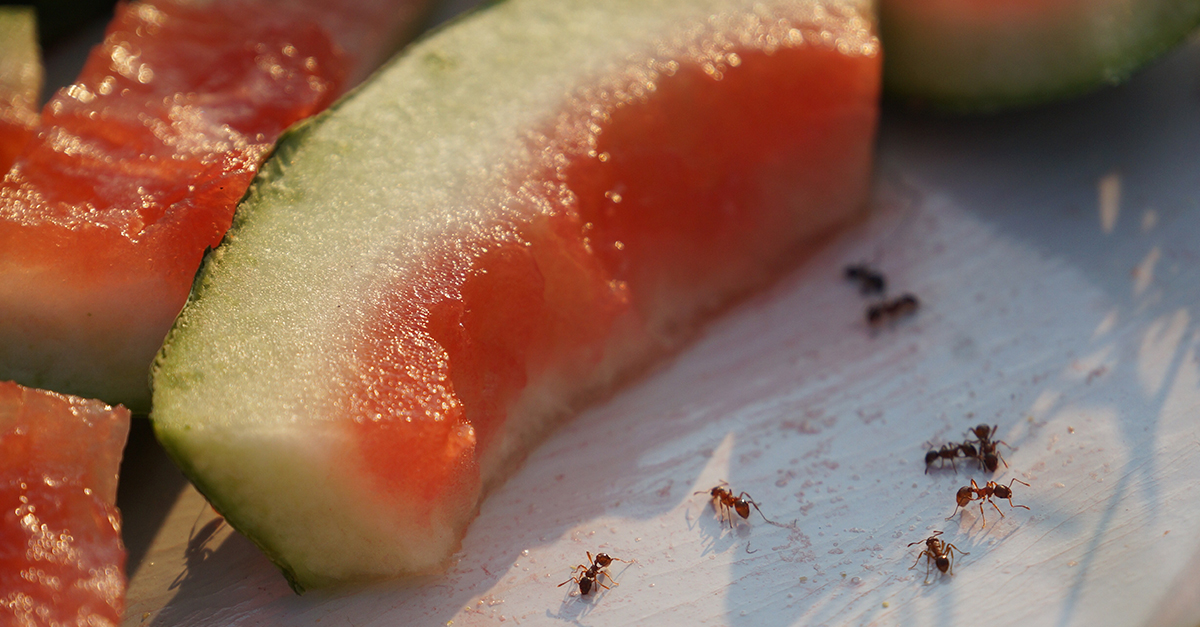As the days get longer and the temperatures rise, people look forward to enjoying the summer. But their enjoyment of the season is often spoiled by the resurgence of insects and other pests that were dormant during the winter.
An increased pest presence can damage a facility and pose health risks to its occupants, so it’s critical to understand which pests to look out for and how to manage them.
Uninvited summer guests
Commercial buildings experience high levels of foot traffic from people and pests alike. Facilities in urban and suburban areas are particularly vulnerable to summer pests such as:
- Ants: These insects often live in colonies, so the presence of one ant usually means there are many more you can’t see. Effective pest management needs to target the problem at the source to remove the risk of ants returning.

- Flies: These small, winged insects tend to congregate in drains, windowsills, and garbage disposal areas. They gravitate toward spaces that harbor pathogens, so they can easily spread disease throughout a facility. Unfortunately, they reproduce quickly and have a long lifecycle, making them difficult to eradicate.
- Cockroaches: Similar to flies, cockroaches crawl along contaminated surfaces like drains, pipes, near trash cans, and under sinks. They can transmit 33 types of bacteria, six types of parasitic worms, and seven types of human pathogens wherever they set foot next.
- Rodents: Rats and mice are particularly troublesome during the summer. With the potential to transmit 35 types of diseases, reproduce quickly, and squeeze through cracks a fraction of their size, rodents can infiltrate even the most seemingly secure facilities.
A trio of risks
Pest control involves removing the pests you see today, and preventing more from entering your facility tomorrow. It’s best to be proactive, as the damage pests can wreck on your facility are threefold:
- Health hazards: As mentioned above, insects and rodents can spread dozens of diseases and germs that can lead to illnesses for your staff and building occupants. Pest management is critical to protect the health and safety of those who frequent your business.
- Reputational harm: Unfortunately, a full-blown pest infestation isn’t necessary to damage your business’ reputation. Even one cockroach or rodent sighting can lead to a negative review and hurt your brand for years to come.
- Facility damage: In addition to putting your building occupants and company reputation at risk, pests can cause structural damage. For example, carpenter ants tunnel through wood, while pavement ants build nests in soil that can eventually lead to cracks in your building’s foundation. Rat teeth never stop growing, so they gnaw on their surroundings to wear them down. If they chew on electrical wires, it can pose a significant fire hazard.
A pest-free summer
If the idea of pests and their resulting threats causes you to lose your cool this summer, take action! By remaining diligent with the following steps, you can rest assured your facility will be protected:
- Identify where pests are getting in and seal it off. Pests are sneaky and can enter your facility through drains, windows, and small openings. Identifying how they’re getting in and sealing off these entry points is the first step in protecting your facility.
- Deep clean and disinfect your facility. For many types of pests—including flies and cockroaches—areas that house garbage and waste provide the ideal environment for feeding and breeding. Dispose of waste quickly, clean the areas regularly, and reduce hiding places for pests. Disinfect the area yourself or hire a cleaning service to help protect employees and visitors from pathogens spread by insects and rodents—and even the germs spread by people.
- Schedule routine pest inspections. Even if you’re not a pest expert, you can efficiently safeguard your facility from insects and rodents by partnering with certified pest control providers. Routine inspections help identify issues early and quickly, so you can mitigate the problem and get back to business as usual. Ongoing monitoring, strategically placed baits, and exclusion methods such as sealing off openings that give pests access to the facility can help prevent infestations before they grow.
When the weather heats up, so does pest activity. By maintaining cleanliness and bringing in a professional pest control company, you can safeguard your facility this summer and beyond.




